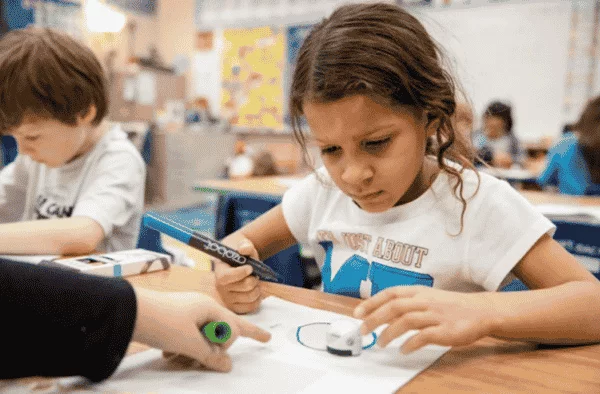By Lauraine Langreo, Education Week
Hawaii is trying to prepare its K-12 students to fill the massive shortages of jobs in STEM-related fields.
The Hawaii Space Grant Consortium, a community educational program supported by the National Aeronautics and Space Administration, has partnered with schools across the state to implement robotics in the classroom.
“We’re trying to build this pipeline from K-12 and eventually have the students go on to college to build robotics or satellites, and eventually, hopefully, work at NASA as engineers,” said Adria Fung, robotics engineering education specialist at the consortium, during a session at the 2022 International Society for Technology in Education conference.
Fung created a robotics curriculum that schools across the state are using to prepare students for the STEM workforce. The Hawaii Space Grant Consortium provides lesson plans, resources, and support for the teachers so that they’re easily able to implement the curriculum into their classroom.
The curriculum is based on VEX IQ robots and is aimed at grades 4 through 8. Using the robots, educators can teach students robotics engineering concepts such as gear ratios, speed, and torque.
Fung, who formerly taught at a middle school and led a robotics competition team, developed the robotics curriculum after she realized that when robotics concepts are only taught during after-school robotics clubs, then not as many students are introduced to the material and the ones who do not understand the underlying concepts of robotics as well.
“Students just want to build and test and code and refine their robots, but without any kind of concepts or knowledge,” Fung said.
“There’s not a lot of teaching time after school,” she added. “So that’s why I try to use the classroom time to teach the robotics engineering concepts so they can implement it in their competition robots after school if they choose to.”
The curriculum is not just for STEM educators. It’s designed so that teachers from all subject areas will be able to implement robotics into their classrooms easily, Fung said.
“Whether they teach math, or social studies, or English, [they] can easily apply robotics into those fields,” she said.
For example, for social studies in Hawaii, students are learning about the history of voyaging and about a canoe called Hōkūleʻa that traveled the world using only traditional navigation techniques.
Click here to read the full article on Education Week.



